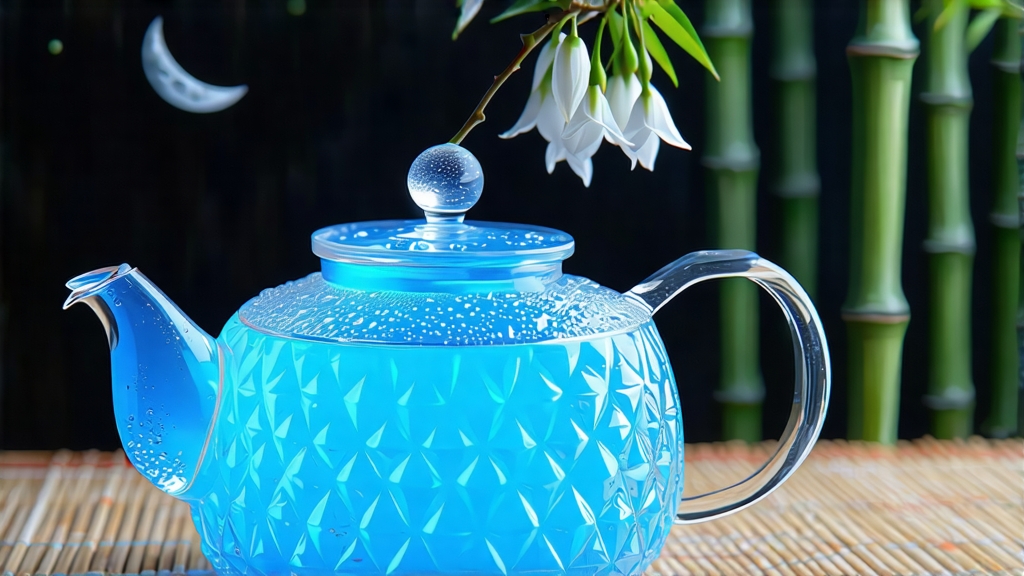
White tea is the quietest child in the Chinese tea family, and within that hush White Hair Silver Needle (Bai Hao Yin Zhen) is the whisper that refuses to fade. To the uninitiated it looks like a pile of pale twigs; to the initiated it is moonlight trapped in agricultural form. This essay invites the international reader to listen to that whisper, tracing its journey from a Song-dynasty court curiosity to a modern luxury, decoding the craft that turns a single bud into liquid light, and learning how to coax that light into a cup without scaring it away.
-
A bud that outlived dynasties
The first written record that can be securely linked to Silver Needle appears in the Song Huiyao, an imperial archive of 1108 CE, where “white downy tips” were listed among the tribute teas sent north to the capital of the Northern Song. At that stage the tea was probably nothing more than air-dried buds gathered wild from the limestone ridges of northern Fujian; compressed cakes were still fashionable, so the fluffy buds were steamed, pressed into molds, then broken off and whisked like matcha. When the Ming emperor Hongwu banned compressed tribute in 1391, the buds were set free: leaf shape was allowed to remain leaf shape, and the precursor of Silver Needle drifted into the market stalls of Fuzhou. The name “Yin Zhen” itself surfaces only in 1796, when a Fuding magistrate named Liu Xiang boasted in his county gazetteer that “our white needles outshine the green swords of Jiangnan.” By the late Qing the tea had become a currency of diplomacy: in 1891 a Fuding merchant carried 100 liang (3.75 kg) of Silver Needle to the London International Health Exhibition, where it was tasted by Queen Victoria’s court physicians and promptly nicknamed “white caviar.” Thus a bud that once perfumed the Forbidden City crossed the sea and entered the English vocabulary of luxury. -
Terroir: where granite kisses the East China Sea
Authentic Silver Needle is born inside a 270 km² micro-zone that straddles the Taimu mountain range in Fuding county and the neighboring Zhenghe basin. The soils are Jurassic-era granite sands, poor in nitrogen but rich in potassium and fluoride; the roots must struggle, so the buds thicken their cell walls with aromatic amino acids. At 27° north latitude the region sits in the sweet spot of China’s subtropical monsoon: an annual mean of 18.5 °C, 1750 mm of rain, and 230 foggy days. The fog is crucial; it acts like a giant soft-box in a photography studio, scattering sunlight into a diffuse glow that forces the tea bush to produce extra chlorophyll-b and L-theanine. The result is a bud that is biologically tense—packed with potential energy yet visually relaxed, its surface clad in a down so fine it resembles frozen breath. -
Two gardens, two temperaments
Within the protected zone two landraces dominate. Fuding Dabai (Big White) yields a plumper bud, 2.5–3 cm long, silvery-green, with a mango-like lactone aftertaste. Zhenghe Dabai produces a slimmer, more ivory-colored bud, 2–2.3 cm, higher in catechins, hence a cooler, mint-tinged finish. Purists treat them as yin and yang: Fuding for fragrance, Zhenghe for structure. Since 2012 the Chinese geographical indication law allows only buds plucked from these two cultivars, between 15 March and 10 April, before the Qingming festival, to bear the name “Bai Hao Yin Zhen.” Anything else—later pickings, different cultivars, or leaf-and-bud sets—must be marketed simply as “white tea,” a legal distinction akin to the difference between Champagne and sparkling wine. -
The craft: doing almost nothing, at the right moment
Silver Needle is the least manufactured tea in the world, yet its minimalism is ferociously precise. Picking starts at dawn when the dew point is 95 %; the bud is snapped off with the nail of the middle finger to avoid the heat of the fingertip. A seasoned picker fills only 500 g per hour, the daily quota of 2.5 kg must be delivered to the withering shed before 10